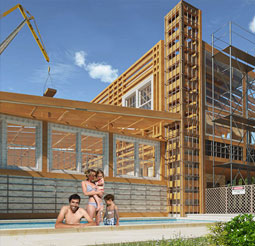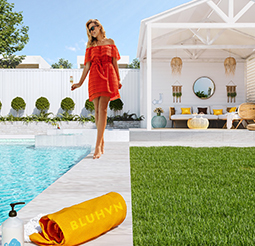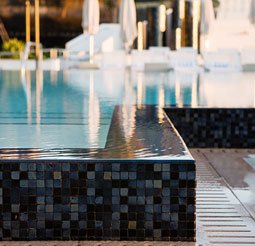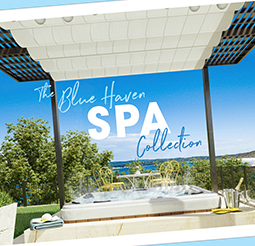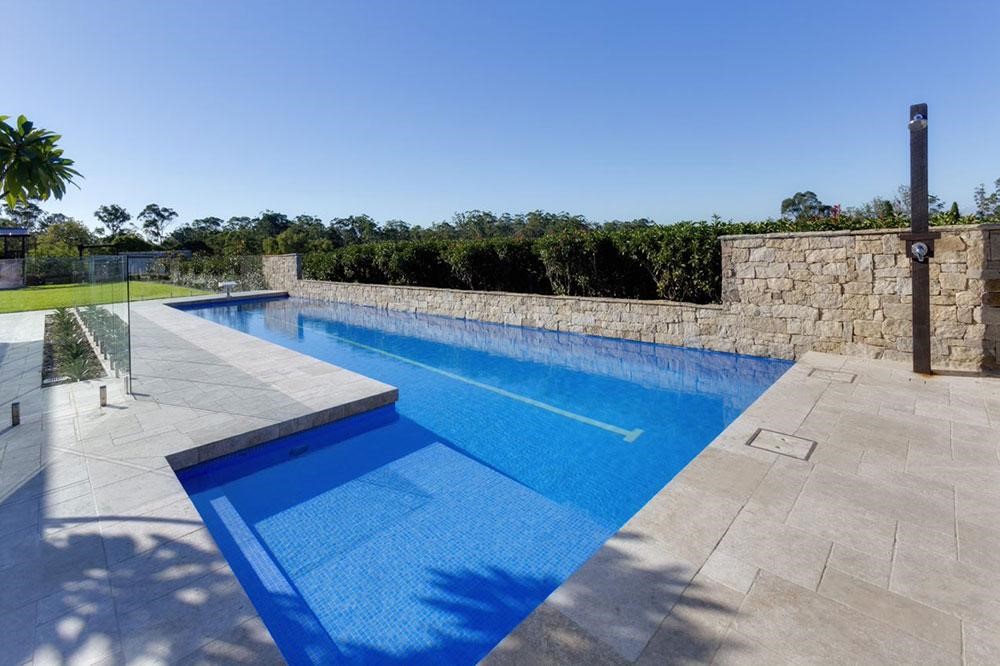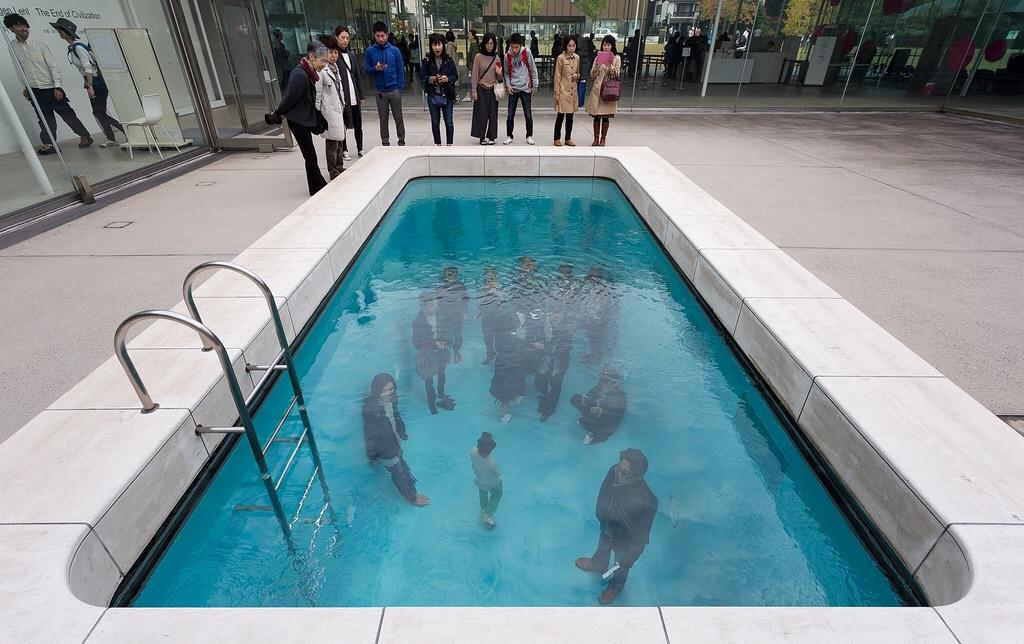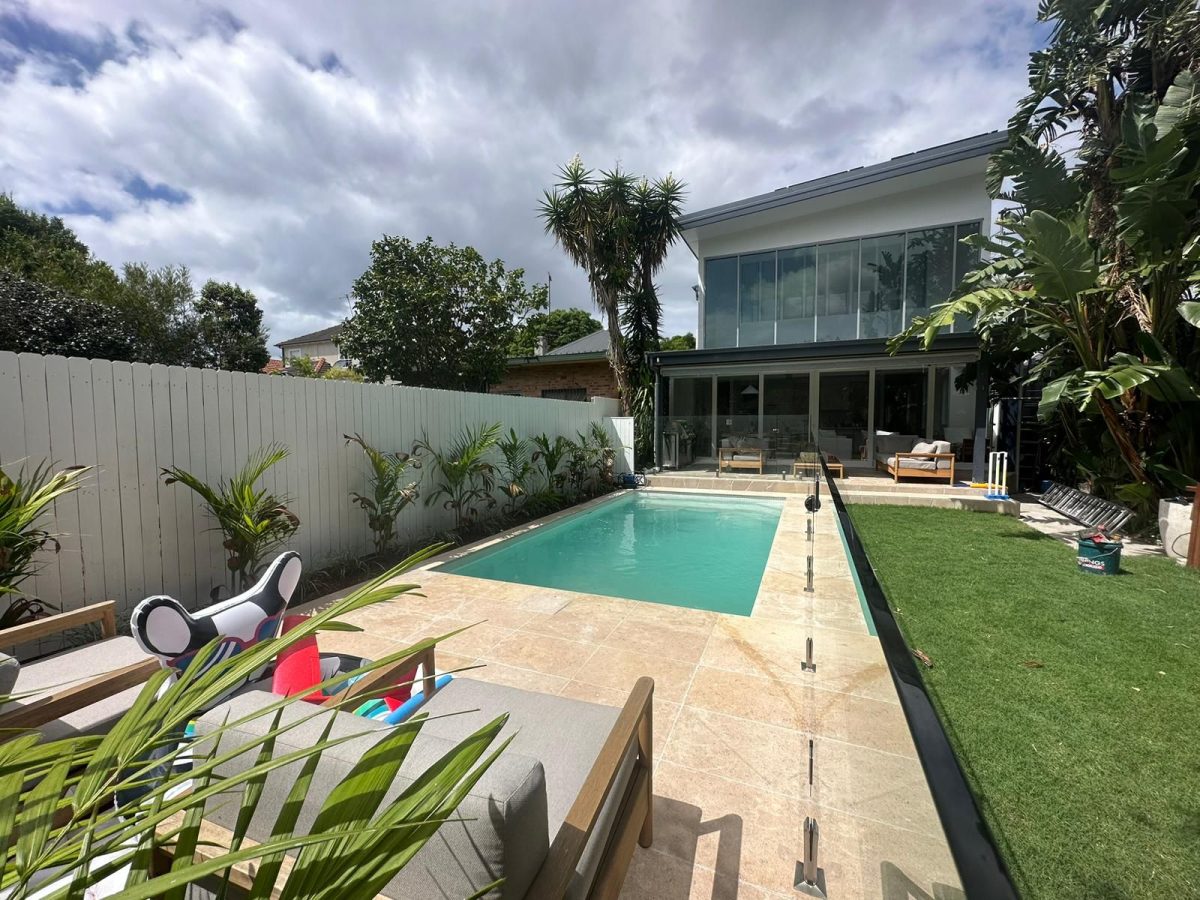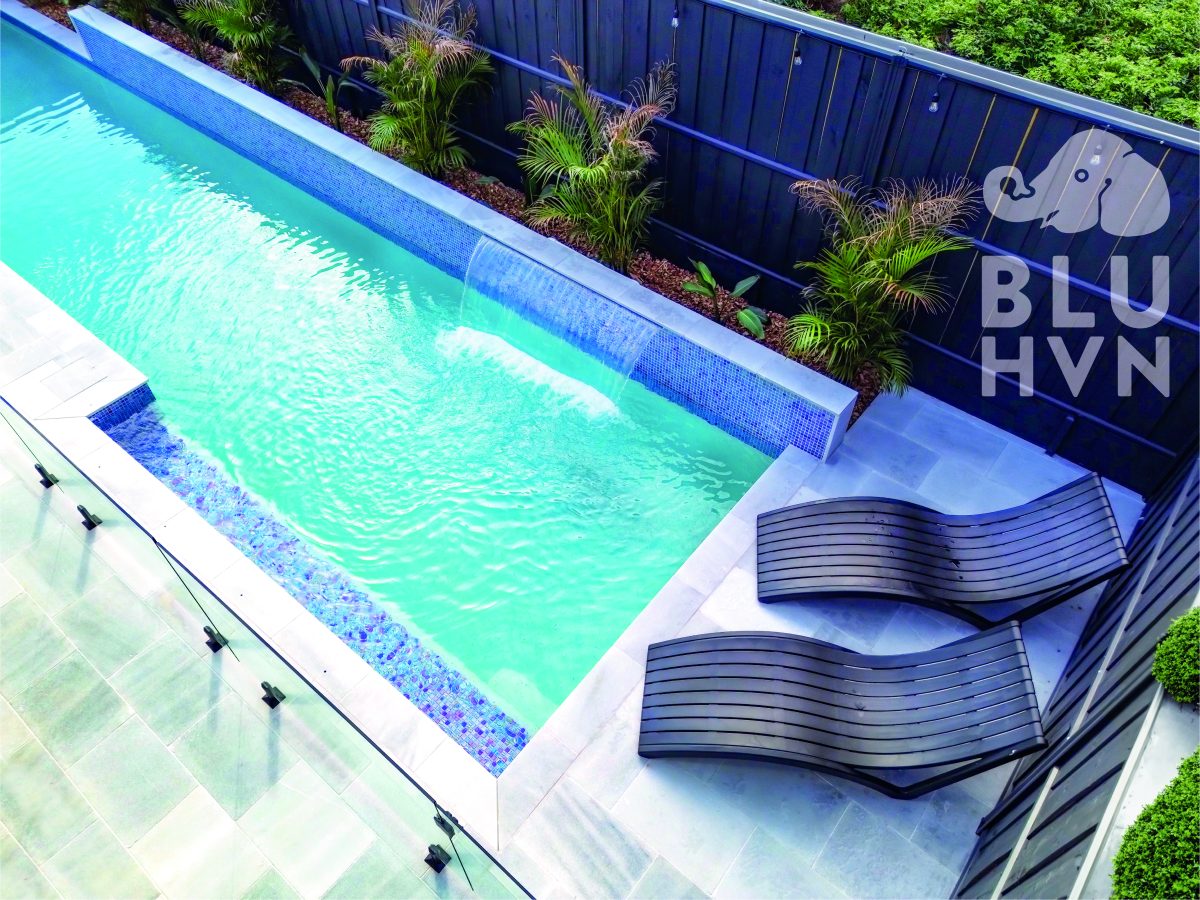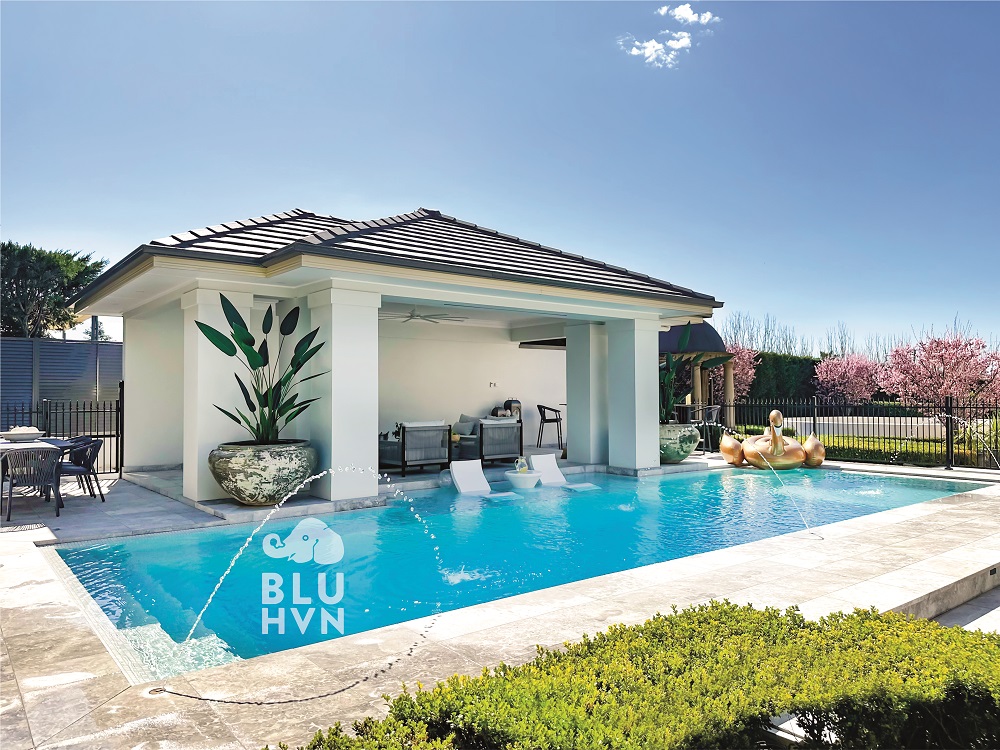Finding the Sweet Spot: The Ideal Temperature for Your Pool Water
May 9, 2024
If you’ve ever jumped into an unexpectedly cold swimming pool, you know it’s not a lot of fun. By the same token, swimming in an overheated pool can be draining, unenjoyable and a health risk. So, how do you find that perfect sweet spot where the pool is just right? In this article, we’ll explore all you need to know about getting the right swimming pool water temperature.
What is the ideal pool water temperature?
There’s a pretty simple answer to this question, but also a slightly longer one. The short version is that the standard swimming pool temperature should be between 25-28°C. These are the guidelines from bodies such as Swimming Australia and FINA (now known as World Aquatics), so they apply more to commercial and athletic swimming pools. There are various reasons for this, but it mostly prevents dehydration, muscle cramps and overheating in those performing strenuous physical activity in the pool.
As such, the recommendations for residential swimming pools differ slightly. Most pool owners choose to alter the temperature slightly depending on the season, for example:
- Ideal warm season pool temperature: 26-28°C
- Ideal cold season pool temperature: 29-30°C
It’s not a remarkable difference, but it shows that people enjoy their water a little cooler in the summer months and slightly warmer when the mercury drops.
We’ll discuss this in more detail later, but it’s important to remember that your pool temperature may need to change depending on your activities. For example, young children learning to swim need the temperature slightly higher to keep their muscles warm, and for exercises like hydrotherapy, you’ll need to increase the temperature again.
For the record, the maximum allowed water temperature for public pools in NSW is 38°C, and this is a principle homeowners should also apply.
What influences your pool’s temperature?
If you already use a dedicated pool water heating system, such as solar, a pool heat pump or a gas pool heater with a controllable thermostat, you won’t need to worry too much about this. That’s because these systems maintain your desired water temperature automatically.
However, other factors can still affect the temperature, such as:
Sun/shade: If your pool area is bathed in sun all day, the water will warm up naturally. If you have a lot of trees around the pool, keeping it shaded, the temperature will be lower.
Pool depth: The deeper your pool, the more water it takes to fill it. A larger body of water heats and cools more slowly than a shallow pool.
Pool materials: In colder months, the water in a concrete swimming pool loses heat faster than in a fibreglass pool.
Wind exposure: A well-sheltered pool that doesn’t experience much wind will stay warmer for longer, especially in the cooler months.
All of these factors should be considered because even if you use a thermostat, the system will need to work harder if these factors aren’t ideal. Always consult with a pool construction professional when planning your pool design.
The benefits of finding the ideal pool water temperature
Nobody wants to leap into a freezing-cold swimming pool, nor do they want it so hot that they can’t enjoy a swim or other activities. But there are plenty of other reasons to ensure your pool stays just right all year round.
Make your pool more enjoyable
This benefit is obvious. If you’ve got your pool set at the perfect temperature for you and your family, everyone will enjoy it more. Everybody’s preferences are different, depending on what you use the pool for and even the time of day you use it. But you’ve bought your pool to enjoy it, so keeping it at a comfortable temperature makes sense.
Safety benefits
If your water is too hot, it can lead to dehydration, muscle cramps, vomiting and overheating. This is especially true if you’re extremely active in the pool, such as swimming laps or if the kids are playing energetically. Combined with potential sun exposure, this is a risk that needs to be considered.
On the other hand, a pool that’s too cold can lead to hypothermia, difficulty breathing and other responses that increase the risk of drowning. So, for everybody’s safety, never let your water temperature become too extreme.
Improved health
By controlling your pool’s temperature, you can even control the health benefits. For example, many people talk about the health benefits of cold water swimming, such as increased circulation, better mental health and an improved immune system. This activity can also be dangerous, so it’s important to understand how to stay safe in cold water.
There are also health benefits to swimming in perfect-temperature water, as it encourages physical activity and improves metabolism. You should always put your health first, regardless of your pool preferences.
The effect on pool maintenance
If you use chemicals such as chlorine or algaecides in your pool, you should be aware that certain chemicals react differently to heat. For example, chlorine levels decline faster when the pool’s water temperature is higher. So, if you like a nice warm swimming pool, be prepared for a little more maintenance to keep your levels in check. Without those additional chlorine level checks, your pool is at risk of bacteria and algae growth.
Tips for keeping your pool at the right temperature
As you can see, maintaining a comfortable water temperature in your pool is vital. But how exactly do you do that? Here are some options for keeping your pool swim-ready all year round.
Pool heating systems
The easiest way to maintain your pool’s temperature is with a heating system. For many years, electric pool heaters have been the norm. However, they can be costly to run, especially if you want your pool heated all year. A more cost-effective option is a gas pool heater, which performs the same job but costs less to run.
Alternatively, the more modern method is solar pool heating. These systems use a solar collector to gather and transfer the sun’s heat to the pool. Essentially, it’s a series of tubes with water circulating through them to maintain the desired temperature.
Most modern heating systems feature fully programmable thermostats, giving you total control over your pool’s water temperature.
Consider pool covers
Pool covers aren’t the perfect solution as you don’t have precise control over the temperature. However, covers are a great option if you want to keep the pool warm without spending as much money. Pool covers effectively trap the warmth and heat the water underneath, and they also help to reduce evaporation.
Even if you use other pool heating methods, you can still benefit from a cover. Of course, they help keep debris from falling into the pool, but by trapping the heat inside, your heating system doesn’t need to work as hard. This reduces your running costs through energy savings.
A temperature for every activity
Early in the article, we mentioned that people often adjust their pool temperature between seasons. It’s also important to remember that the ideal temperature may be different depending on the activities you enjoy in the pool. Here are some approximate guidelines, which can vary slightly depending on personal preference.
- Children learning to swim: A higher temperature between 29-33°C to keep muscles warm.
- Swimming/laps: Higher-intensity swimming requires a temperature between 25-28°C.
- Hydrotherapy: 30-32°C is ideal for low-intensity hydrotherapy exercises.
Regularly check your water temperature
It may sound obvious, but if you want to maintain a good pool temp all year round, you’ll need to check it regularly. The fact is, during the cooler parts of the year, swimming pools can lie dormant for months at a time. During this period, you may not even choose to heat your pool at all, but you should still check it regularly to ensure temperatures aren’t so low as to cause any damage.
There are many tools available, both manual and digital, for checking your pool’s temperature. You can make necessary adjustments quickly by checking it frequently, rather than waiting for a lengthy heating process when you’re ready to use the pool.
Discuss temperature control choices before construction
If you’re considering installing a swimming pool at your home, you can save yourself a lot of headaches by discussing design ideas with a professional beforehand. Many people think they can just drop a fibreglass pool in wherever there’s room, and that’s all they need to worry about.
In reality, by positioning your pool correctly, using the correct depth, and even choosing the right colours and materials, you can make your pool far more cost-effective to heat in the long run. So, the extra effort in the planning stage is worth it to decrease your total cost of ownership over the pool’s lifespan.
Need assistance controlling your pool’s water temperature?
Here at Blue Haven, we live and breathe swimming pools. From pool water temperature accessories and advice to pool design and construction, we’re the experts you can count on. With decades of experience in residential swimming pools and spas, we’re your one-stop shop for everything you need. If you need advice on maintaining your pool’s ideal temperature or heating and cooling accessories, we’ve got you covered. Contact Blue Haven today and find out how we can transform your swimming pool experience.
Read More:

